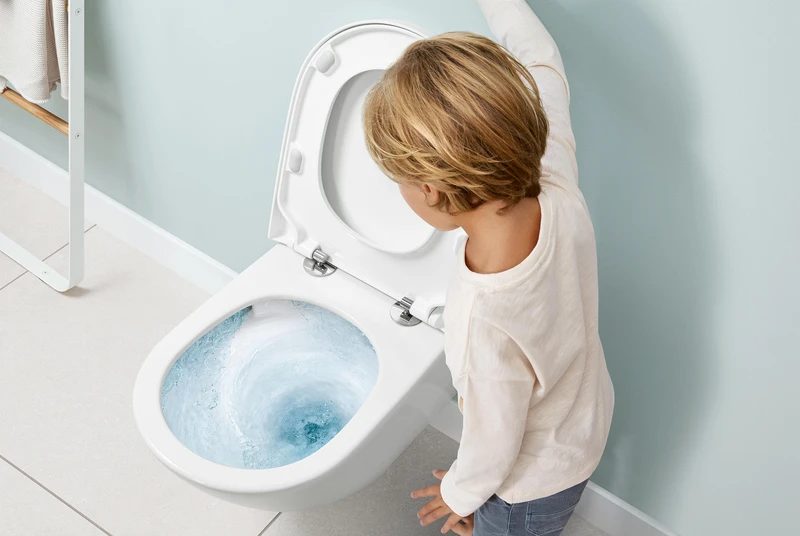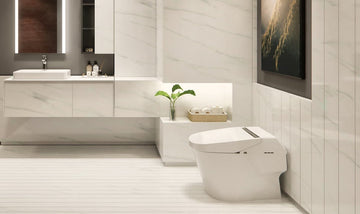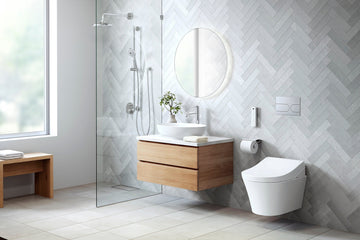In today's rapidly advancing world, the concept of accessible smart toilets has transformed from a luxury to a necessity. As technology continues to evolve, ensuring that it caters to everyone, including individuals with disabilities, is paramount. The introduction of smart toilets that are accessible not only enhances the quality of life for many but also sets a new standard in bathroom convenience and hygiene.
Smart toilets are no longer just about comfort and luxury. They are about making lives easier for individuals who face daily challenges due to disabilities or age. With the integration of advanced technology, these toilets are designed to provide enhanced accessibility, thereby offering a sense of independence to users. But what exactly makes these toilets 'smart' and 'accessible'? Let's delve into the features and benefits that these innovative solutions bring to the table.

Features of Accessible Smart Toilets
Accessible smart toilets come equipped with a range of features that make them a cut above the rest. From automatic flushing systems to heated seats, these toilets are designed with the user in mind, ensuring maximum comfort and ease of use. One of the standout features is the automated lid, which opens and closes without the need for physical contact, a boon for individuals with mobility issues.
Another remarkable feature is the adjustable height, which allows the toilet to be set at a height that is comfortable for the user. This is particularly beneficial for those who find it challenging to sit down or stand up. Furthermore, the integration of voice-activated controls means that users can operate the toilet without having to reach for buttons or levers, enhancing accessibility further.
Benefits of Smart Toilets
Beyond the basic functionality, smart toilets offer enhanced hygiene. Bidet functions, coupled with warm air dryers, eliminate the need for toilet paper, providing a more sanitary experience. For more insights on how bidets work, you might want to check out how bidets work.
Another significant advantage is the water-saving technology integrated into these toilets. By using dual-flush systems and sensors to determine the necessary amount of water per flush, smart toilets contribute to sustainability by reducing water wastage.
The Role of Technology in Accessibility
Technology plays a crucial role in enhancing the accessibility of smart toilets. The use of Internet of Things (IoT) allows these toilets to connect to other smart devices in the home, providing users with a seamless experience. For instance, users can control the toilet through a smartphone app, adjusting settings such as seat temperature and water pressure to suit their preferences.
Moreover, the integration of AI technology means that smart toilets can learn user preferences over time, automatically adjusting settings for optimal comfort. This is particularly beneficial for individuals with cognitive impairments, as it reduces the need for manual adjustments.
Smart Toilets for Everyone
While the primary focus of accessible smart toilets is to aid those with disabilities, the benefits they offer extend to everyone. The convenience, hygiene, and sustainability features make them a desirable addition to any modern home. To explore more about the benefits of smart toilets, you can visit bathroom technology.
Innovative solutions like these are paving the way for a future where accessibility is a standard feature rather than an afterthought. For instance, toilets designed for wheelchair users, detailed in this innovative toilets article, showcase how design and technology can work hand in hand to create inclusive solutions.
Challenges and Considerations
Despite the numerous advantages, there are challenges associated with the adoption of smart toilets. One of the primary considerations is cost. While the initial investment might be higher compared to traditional toilets, the long-term benefits in terms of water savings and enhanced hygiene can offset this cost.
Another challenge is ensuring that these toilets are user-friendly for everyone, including the elderly and technologically averse individuals. Manufacturers need to focus on creating intuitive interfaces that do not overwhelm users.
Future of Accessible Smart Toilets
The future of accessible smart toilets looks promising, with ongoing advancements in technology set to make them even more efficient and user-friendly. Innovations such as sensor-based cleaning and health monitoring capabilities are on the horizon, offering users an unprecedented level of care and convenience.
For those interested in the potential future developments, the article on reinventing the toilet offers insightful perspectives on how these advancements could shape the industry.
Conclusion
In conclusion, accessible smart toilets are not just about convenience; they are about inclusivity and enhancing the quality of life for individuals with disabilities. By leveraging cutting-edge technology, these toilets offer a unique blend of accessibility, hygiene, and sustainability, making them an essential component of modern living.
As we move towards a future where accessibility is prioritized, smart toilets stand as a testament to how technology can be harnessed to create solutions that benefit all. For more insights on how to use these innovative solutions, check out using bidet for beginners.

FAQs
What are the main features of accessible smart toilets?
Accessible smart toilets come with features like automated lids, adjustable heights, voice-activated controls, and bidet functions.
How do smart toilets contribute to sustainability?
Smart toilets use water-saving technologies such as dual-flush systems and sensors to minimize water usage, contributing to environmental sustainability.
Are smart toilets easy to use for the elderly?
Yes, smart toilets are designed to be user-friendly, with intuitive interfaces and voice-activated controls, making them suitable for the elderly and those with limited mobility.
This article contains affiliate links. We may earn a commission at no extra cost to you.






